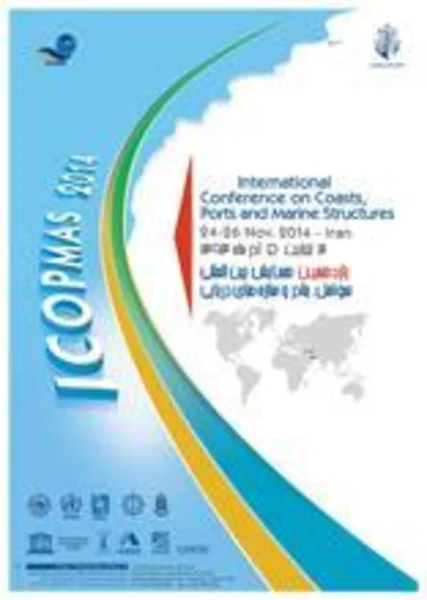-
seasonal sea level changes and thermal expansion in the persian gulf
جزئیات بیشتر مقاله- تاریخ ارائه: 1385/01/01
- تاریخ انتشار در تی پی بین: 1385/01/01
- تعداد بازدید: 775
- تعداد پرسش و پاسخ ها: 0
- شماره تماس دبیرخانه رویداد: -
a climate signal in sea-level can be expected for two reasons: firstly, the ocean volume changes whenever a change in the heat content of ocean water takes place, and secondly, ocean mass changes due to a change in the mass flow between the ocean and other reservoirs of the hydrological cycle. monitoring ocean temperature is not a simple matter, however. while sea surface temperatures are relatively well measured, deep ocean thermal structure remains unconstrained. even the thermal structure of the mixed layer is not well monitored, although some efforts are being made toward that end. in an attempt to understand the causes of seasonal cycle of sea level in the persian gulf, we relate sea level data from eleven stations to atmospheric pressure and thermosteric level. the sea level varies slightly from one station to another and are significantly are correlated to each other the thermosteric sea level variability produced by the temparature in the persian gulf is estimated from temperature profile at each grid point. the contour maps of thermosteric level show that height due to the thermal expansion is high in summer and autumn, and low during winter and spring. the monthly mean thermostric height ranges from +2,2 cm in july to -2,1 cm in february. the dominant influence on the seasonal cycle of sea level is associated with atmospheric pressure but the thermosteric sea level adjustment in the multivariate analysis increases the proportion of the variance explained to 78,1-90,7 %. seasonal cycle of the flow exchange through the strait of hormuz is related to the seasonal sea level changes.
مقالات جدیدترین رویدادها
-
استفاده از تحلیل اهمیت-عملکرد در ارائه الگوی مدیریت خلاقیت سازمانی و ارائه راهکار جهت بهبود
-
بررسی تاثیر ارزش وجوه نقد مازاد بر ساختار سرمایه شرکت های پذیرفته شده در بورس اوراق بهادار تهران
-
بررسی تأثیر سطح افشای ریسک بر قرارداد بدهی شرکت های پذیرفته شده در بورس اوراق بهادار تهران
-
بررسی تأثیر رتبه بندی اعتباری مبتنی بر مدل امتیاز بازار نوظهور بر نقد شوندگی سهام با تأکید بر خصوصی سازی شرکت ها
-
تأثیر آمیخته بازاریابی پوشاک ایرانی بر تصویر ذهنی مشتری پوشاک ایرانی (هاکوپیان)
-
رابطه هوش هیجانی و راهبردهای مدیریت تعارض مدیران مدارس شهر خرم آباد
-
ارزیابی حساسیت قیمتی مصرف کنندگان محصولات غذایی ارگانیک
-
تاثیر سرریزهای گوه ای شکل با طولهای مختلف بر وضعیت فرسایش و رسوبگذاری در قوسها
-
بررسی عملکرد پرسنل بخش های پرتونگاری بیمارستان های وابسته به دانشگاه علوم پزشکی کرمان
-
does accelerating universe permit varying speed of light?
مقالات جدیدترین ژورنال ها
-
مدیریت و بررسی افسردگی دانش آموزان دختر مقطع متوسطه دوم در دروان کرونا در شهرستان دزفول
-
مدیریت و بررسی خرد سیاسی در اندیشه ی فردوسی در ادب ایران
-
واکاوی و مدیریت توصیفی قلمدان(جاکلیدی)ضریح در موزه آستان قدس رضوی
-
بررسی تاثیر خلاقیت، دانش و انگیزه کارکنان بر پیشنهادات نوآورانه کارکنان ( مورد مطالعه: هتل های 3 و 4 ستاره استان کرمان)
-
بررسی تاثیر کیفیت سیستم های اطلاعاتی بر تصمیم گیری موفق در شرکتهای تولیدی استان اصفهان (مورد مطالعه: مدیران شرکتهای تولیدی استان اصفهان)
-
بررسی تاثیر رایانش ابری بر عملکرد سازمانی شرکت های بازرگانی و تجاری
-
اقدام پژوهی در زمینه استفاده از ورزش و فراغت برای مقابله با آسیب های اجتماعی
-
بررسی مقاومت خمشی بر مدول الاستیک بتن گوگردی در مقایسه با هبلکس
-
کاربرد هوش هیجانی در آموزش و پرورش
-
بررسی تاثیر ریسک ارزی بر عملکرد بانک ملت از طریق نقش میانجی هوش مالی




سوال خود را در مورد این مقاله مطرح نمایید :